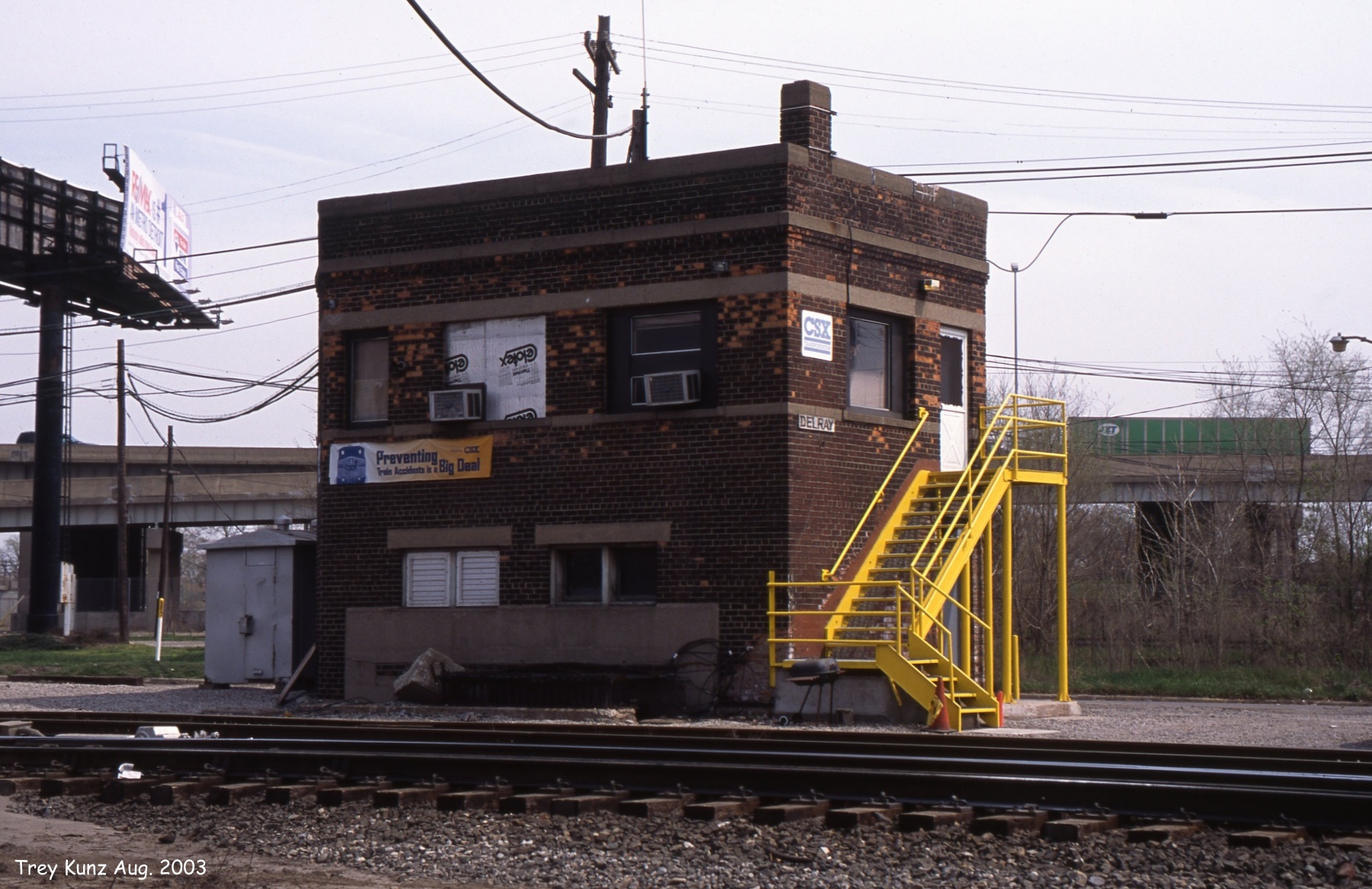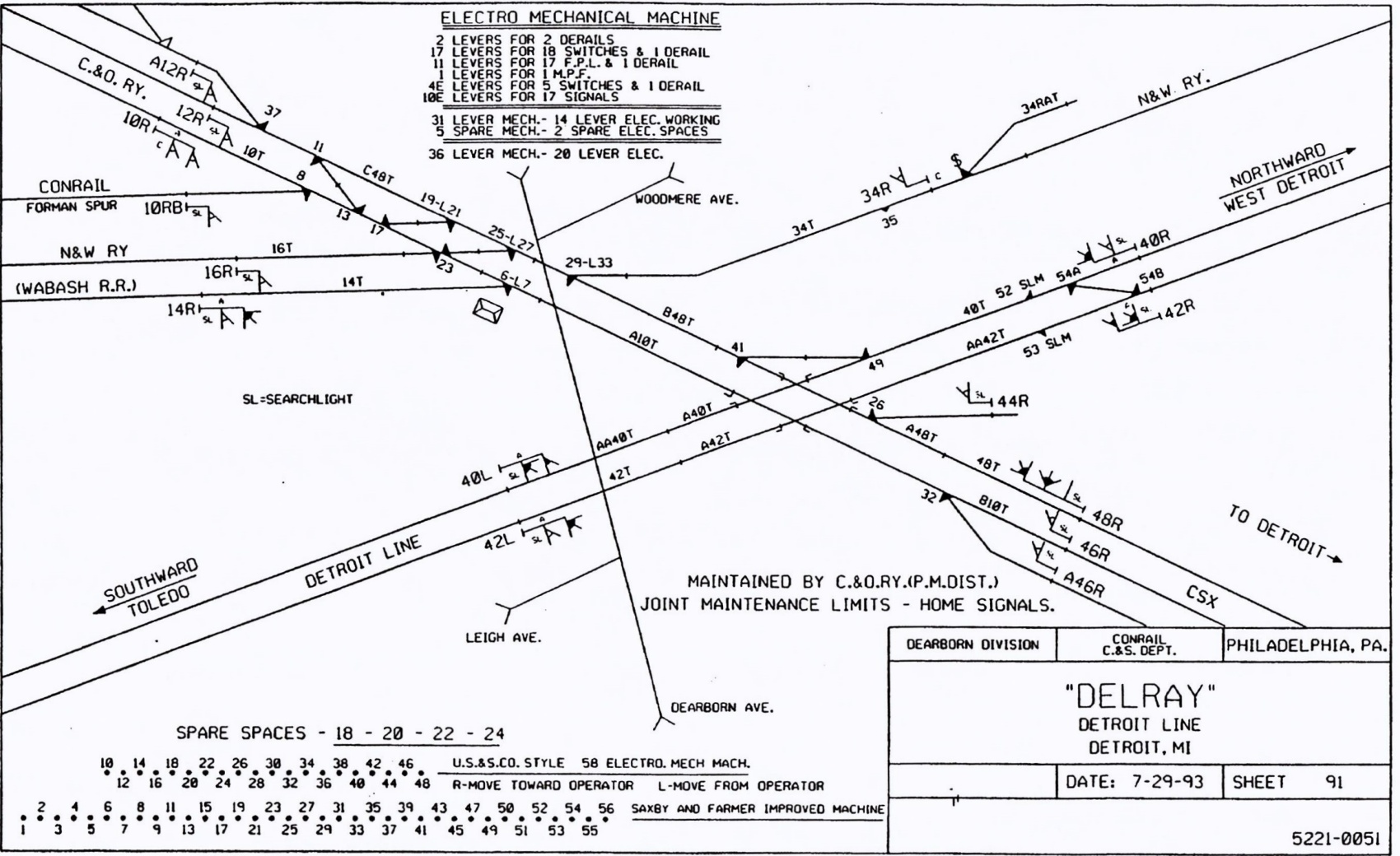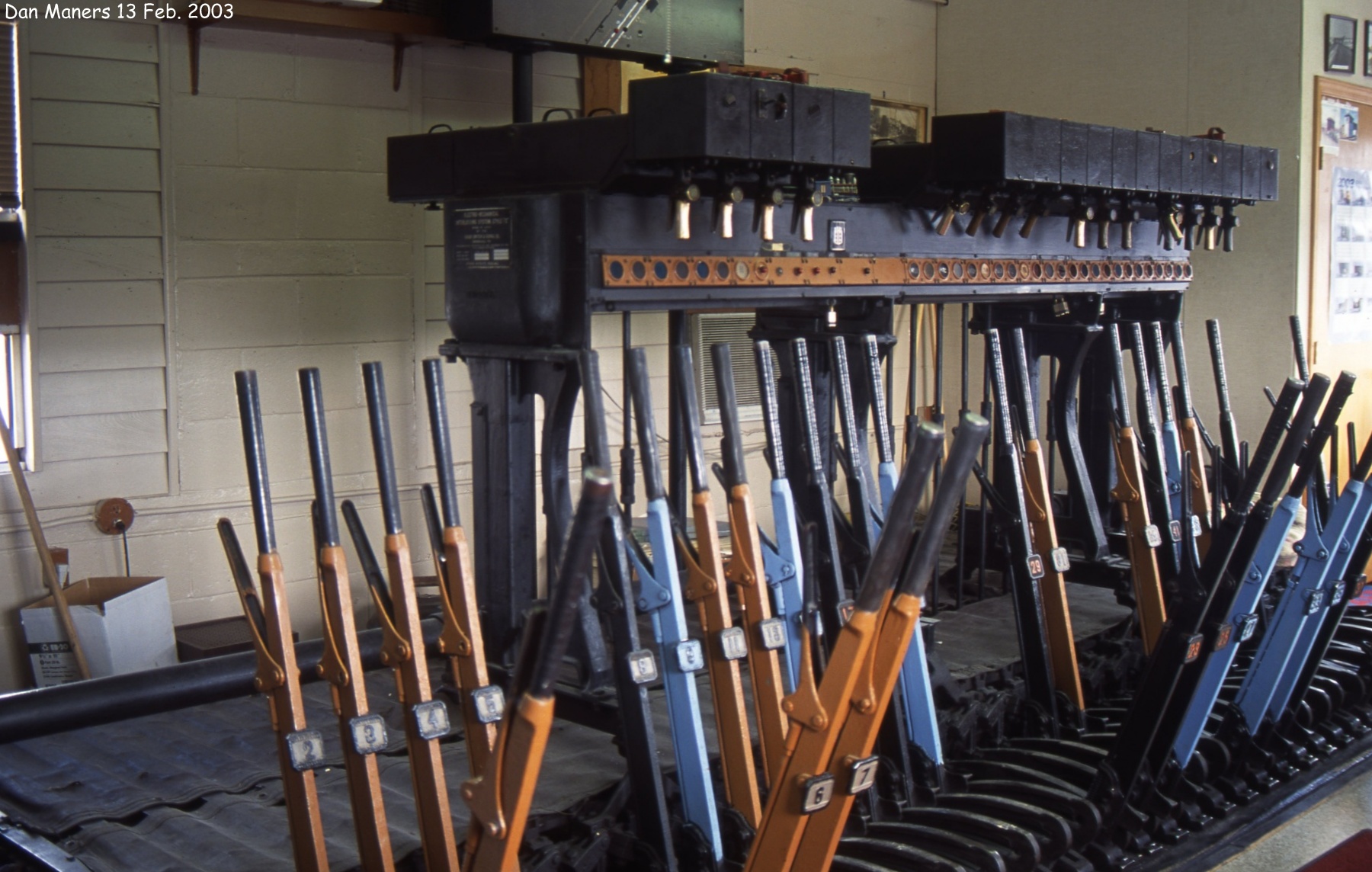The Union Switch and Signal CTC style unit lever interlocking machine was developed in the 1930's to serve as a user interface for relay based interlockings under remote or local operation. Amtrak's THORN tower was built by the Pennsylvania Railroad in 1937 as part of its Philadelphia to Harrisburg electrification project and sought to consolidate a number of manned interlocking stations into a single tower. 83 years later THORN tower remains in operation, although with a significantly reduced territory and gradually approaching plans for retirement. I was able to obtain some video clips of the THORN's CTC machine in order to preserve some degree of its live operation for posterity and this post will use those videos to expand upon my existing coverage of the tower interior and THORN interlocking. If you are unfamiliar with THORN interlocking I would encourage you to visit those pages first.
This aborted take provides a static view of the CTC interface as a SEPTA local has come to a stop or near stop within interlocking limits as it crosses from track #4 to track #1 to finish its run and change directions at the eastbound station platform. We see the upper row with switch levers 41, 47, 49, 53 and 57 set reverse as indicated by the unit levers pointed at the "R" position and the associated yellow illuminated indicator lamps. A red lamp above all switches aside from 43 and 61 indicates that those switches are currently locked for this particular extreme crossover movement. The lower row contains the signal and switch heater unit levers. Currently all signals are locked in Stop status due to the extreme crossover movement. On the model board a yellow track occupancy light (TOL) is illuminated by the 57 switch, indicating the approximate location of the SEPTA local.
Here the Train Director at THORN tower sets the route for the above SEPTA local. The operator toggles the 57, 53, 49, 47 and 41 in the order the train movement would encounter them, although this is not required. After each toggle the operator presses the "code" button on the bottom row below each unit lever. This transmits the state of the unit lever to the interlocking logic or code system similar to an "Ok" or "Apply" button on a computer GUI. THORN interlocking is under direct wire control from the CTC machine and I was told that this makes it necessary to press the code button for each unit lever movement as otherwise the actions would take place immediately after the switch toggle, which was not considered desirable. I believe a remote plant just needs one code button press to send all commands, however a signal command is always selected after the switch commands to avoid race conditions which might result in a mis-routing.
 |
| US&S 504B Code relay equipment. |
After the code button is pressed the relays in the basement send a command to the US&S Style CP air-valve that then throws the Model A-5 pneumatic point machines. Note at time 0:05 the sound of 49 switch throwing. As each switch throws the red switch lock light illuminates which the points throw and when the throw is complete the green "Normal" lamp extinguishes and the yellow "Reverse lamp is lit. As no routes are set. the red lock light goes out. The Train Director waits for the points to line and lock into the desired position, at which point he requests the 58L signal to display over the established route. The interlocking logic determined the route is valid and red lock lamps then illuminate over every switch locked out by the new route, which in this case is all of them aside from 43 and 61. When the interlocking logic has confirmed all the proper conditions are met, the signal displays in the field and the yellow 58L "signal displayed" lamp illuminates. Note, the red lamps over the signal unit levers indicate neither the L or R signals are displayed, but they sometimes go out so they might also represent some sort of locking condition.
 |
| 58L signal displaying Restricting |
Here we see a rogue TOL on Track #1 in the vicinity of the Whitford station. This was intermittently caused by the actions of a signal maintainer. The TOL on track #2 was a known fault, but may have been in the process of being remedied, however because track #2 is currently used infrequently it is not uncommon for track circuit faults to be left in place. The Train Director presses the code button under a catenary circuit controller to trigger the CTC machine to send a supercilious command that will trigger the remote logic to reply with an updated status. The sounds are from relays connected to the US&S 504 code system. While the unit levers for THORN interlocking are wired directly to the relay logic in the basement, the UI elements for remote interlockings are connected to telecom grade relays in the CTC machine that store, forward and receive state from the 504 code system. This works via telephone style code pulses on a shared "code line". Codes have a station ID and a command or a status. In the attempt to verify the status of a intermittent TOL, you can hear the CTC remote coding system going back and forth with status updates. Note how lamps in the process of being updated briefly extinguish.
In this sequence an eastbound Amtrak Keystone Train on track #1 travels through the CALN remote interlocking, traverses the 1-2 miles between CALN and THORN and then enters and passes through THORN interlocking all on a straight route with clear signals. Note the relay sounds as the TOL on the approach blocks, CALN interlocking and the intermediate block change state. The multiple approach block TOL's are holdovers from obsolete configurations of the interlocking that had a signal protecting some industrial sidings that was removed decades ago. At 0:32 the train passes into the cab signal cut block/ This is an extra block that supports locomotive cab signals changing to Restricting in advance of a stop signal. From this point no lamp changes generate audible relay noise as the lamps are cirectly wired into the shelf relay interlocking logic in the basement of THORN.
The twin blue lamps on track #2 west of thorn represent current of traffic (and thus the reason for the name Centralized Traffic Control). Although designed for bi-directional operation, the PRR was not a proponent and when installed in 1937 this CTC panel had almost no bi-directional trackage, with some segments only getting it years later as the physical plant was consolidated.
As the Keystone train enters THORN interlocking at 1:10, the 44R unit lever status changes from displayed to stop at 1:13. A few seconds later the train passes by outside the tower and then proceeds to pass through the interlocking. A major challenge of traditional towers such as this one is keeping track of train movements as there is no automatic train identification or labeling. Tower operators used to pass "next train" information from one to another. As towers became isolated islands they would rely on the dispatcher or data feeds via computer from the dispatching system.












